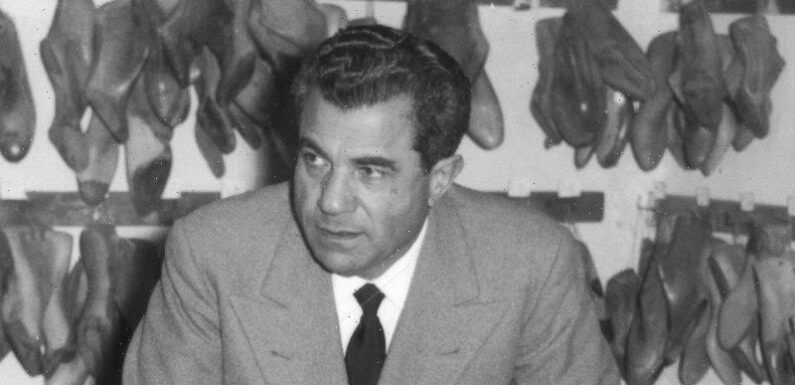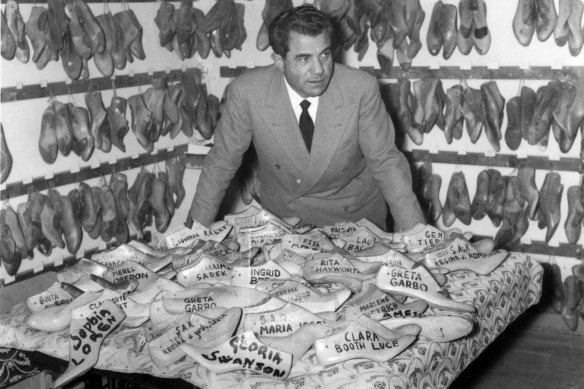
Salvatore: Shoemaker of Dreams ★★★★
(G) 106 minutes
The master shoemaker, Salvatore Ferragamo, came early to his calling. At nine, he cobbled together a pair of shoes for his older sister to wear to her confirmation. Twelve years later, he was making shoes for Douglas Fairbanks Jr and Mary Pickford.
Italian designer Salvatore Ferragamo with some of his shoe shapes.Credit:Archivio Giuseppe Palmas/Sony Pictures Classics via AP
He died in 1960 at the age of 62, bequeathing quite a legacy. Along with his flourishing fashion empire, he left a memoir, written in 1955, and a cache of home movies comprehensive enough to take us from the small Tuscan town of Bonito, where he grew up as the 11th of 14 children, to his celebrated return to Tuscany decades later.
After his American success, he felt an urge to get back in touch with Italian craftsmanship. He built a villa in the hills outside Florence, and installed himself and his fellow shoemakers in the historic Palazzo Spini Feroni on the banks of the Arno. And from there, he sold to the world.
It was a remarkable life and the highly prolific director, Luca Guadagnino, whose latest feature, Bones and All, is also in the cinemas, has made an adroit job of re-creating and examining it. The American actor, Michael Stuhlbarg, a Guadagnino regular, delivers a first-person narration, drawn from the memoir, and Ferragamo’s children and grandchildren reminisce about a man whose love for his family was even more intense than his obsession with the ideal shoe.
Throughout his life, Ferragamo remained determined to learn everything possible about the workings of the human foot, and he was well into his career when he enrolled in an anatomy course at the University of Southern California because there was still more he wanted to know about the angle at which the weight of the body falls on the arch as it moves. Nor was his interest restricted to the foot. After breaking his leg in a car accident, he created a splint which he much preferred to the one fitted by his doctors.
In all his work, the need for comfort came first. After that came the fantasy and the experimentation. One of his most famous innovations was the cork platform heel, which he refused to cover with leather because he liked the look of the cork. Another was The Rainbow. Constructed on a stacked heel of many colours, it was made for Judy Garland as a tribute to her role in The Wizard of Oz.
The final scene in Guadagnino’s film is a shoe ballet designed by an expert in stop-motion photography. The shoes dance around a series of concentric circles and the whole thing finishes with an aerial shot a la Busby Berkeley. It’s a perfect summation of Ferragamo’s career, a harmonious union of craftsmanship and showbiz.
Salvatore: Shoemaker of Dreams is in cinemas on December 1
A cultural guide to going out and loving your city. Sign up to our Culture Fix newsletter here.
Most Viewed in Culture
From our partners
Source: Read Full Article
